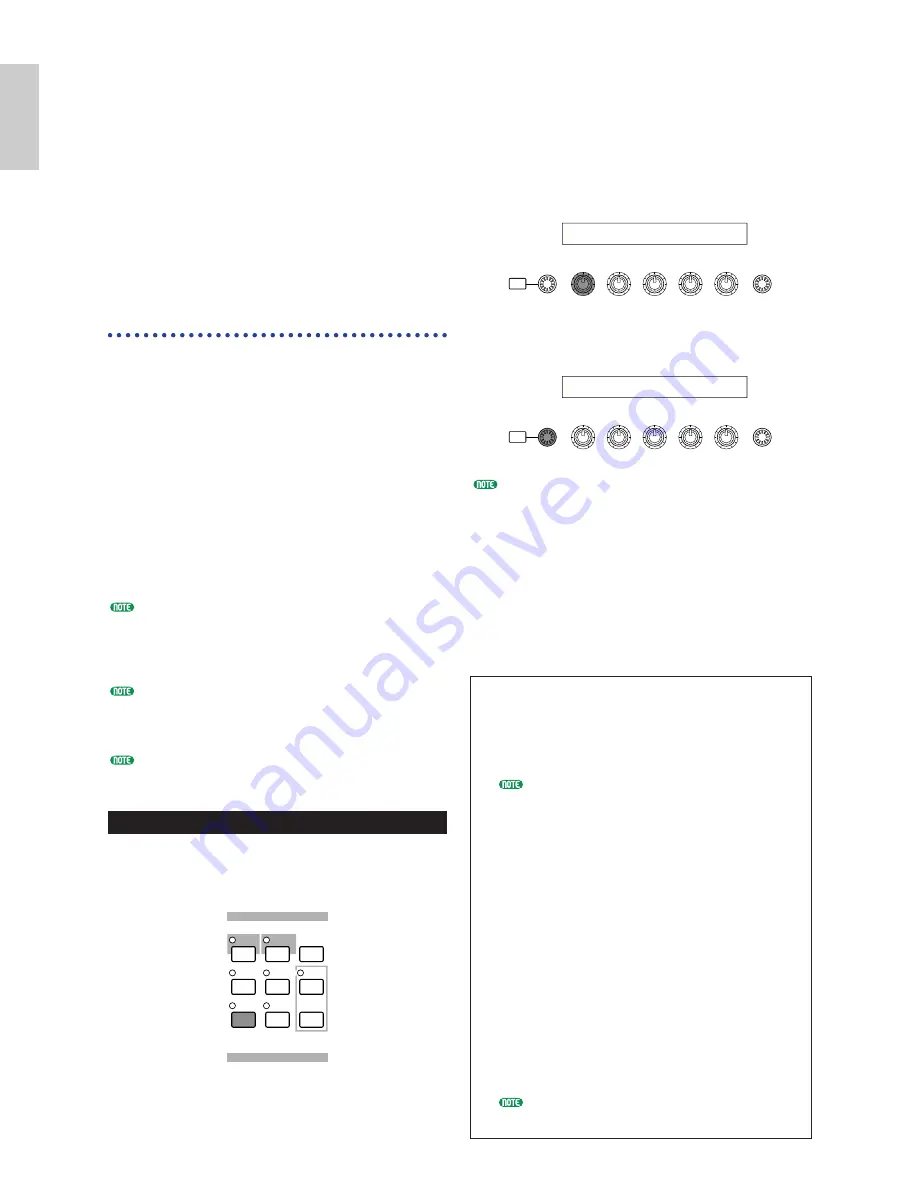
36
Basics
Section
1
Arpeggiator
The arpeggiator is particularly suited to
dance/techno music genres. You can assign any
of 128 Arpeggio Types to each Voice,
Performance and adjust the tempo. You can also
set the Arpeggio Mode (the way in which the
arpeggio is played back when you press a note)
and Play Effects to create your own original
grooves. Arpeggio information can be
transmitted through the MIDI Out.
Selecting and Playing Back
an Arpeggio Type
You can choose from 128 different Arpeggio
Type presets. You can also freely vary the
Arpeggio Tempo to suit the song. The Note
Limit parameter can be used to define the
effective note range of the arpeggio.
Each parameter applies to, and is stored with,
each Voice or Performance. By playing notes on
the keyboard and listening to the arpeggio, you
can adjust these parameters by ear.
The arpeggiator’s parameters are available in
each Edit Mode. In the following Voice Mode
example, the Arpeggio Type is set for a Drum
Voice in Preset Drum 1.
To select the Preset Drum, press the MEMORY
[PRE2] key while holding down the MEMORY
[PRE1] key and press a PROGRAM key. Here, we
will choose Preset Drum 1 so you should press the
PROGRAM [1] key.
If the Arpeggiator switch is already enabled for the
Voice/Performance, this means that the Arpeggiator
will be ready for use whenever you select the
Voice/Performance.
The on/off state of the Arpeggiator can be stored
(Pages 101, 124) for each Voice/Performance.
Selecting the Arpeggio Type
1
Press the [EDIT] key in Voice Play Mode. You
will enter Voice Edit Mode at the screen where
you previously exited.
STORE
VOICE
MODE
UTILITY
EDIT
JOB
PLAY/
STOP
CARD
SEQ
PLAY
PERFORM
COMPARE
2
Turn Knob [A] fully anti-clockwise until
Common is displayed on the bottom line. Voice
Edit Mode consists of two different Edit screens:
Common Edit (for parameters common to all
Drum keys/Elements) and Drum key/Element
Edit. The Arpeggiator parameters are found in
the Common Edit screens that you have now
selected.
3
Use the [PAGE] knob to switch to the ARP
Type (Arpeggio Type) screen.
If you use the [PAGE] knob while holding down the
[SHIFT] key, a menu will be displayed. You can
quickly jump to the ARP screen by using the
[PAGE] knob to move the cursor to the ARP item
in the menu, then releasing the [SHIFT] key(Page
65).
4
Use Knob [B] to jump to the Type parameter.
Now use Knob [B], the [DATA] knob or the
[INC/YES] and [DEC/NO] keys to select the
desired Arpeggio Type. Let’s choose
“BigBeat2” here.
Arpeggio Types are divided into the four
following categories and applications are not
just limited to drum patterns. You can also
select Arpeggio Types for backing chords,
basslines and so on.
When setting the Arpeggio Category to Ct
(Control), you also need to set the Key Mode
parameter (two screens ahead) to “direct.”
Sq (Sequence):
Creates a general arpeggio phrase. Mainly octave
up/down phrases.
Ph (Phrase):
Creates more musical phrases than Sq. Starting
with “Techno,” there are phrases for a wide
variety of musical genres, and for creating
backing tracks for guitar, piano and other
instruments.
Dr (Drum Pattern):
Creates drum pattern-type phrases. Phrase genres
covered include rock and dance. This Type is ideal
for use with drum and percussion sounds.
Ct (Control):
Creates tonal changes. No note information is
created. The Key Mode parameter in Arpeggio
Mode must be set to “direct.”
Details about Arpeggio Types are given in
the separate Data List.
SHIFT
PAGE
PART/ELEMENT
DATA
A
B
C
1
2
ARPíType) Type Tempo Switch Hold
Common GateCut2:Ct 92 off off
SHIFT
PAGE
PART/ELEMENT
DATA
A
B
C
1
2
GEN Name) Ctgry a-Z 0-? Cursor
Common [Dr:Rock Kit ]






























